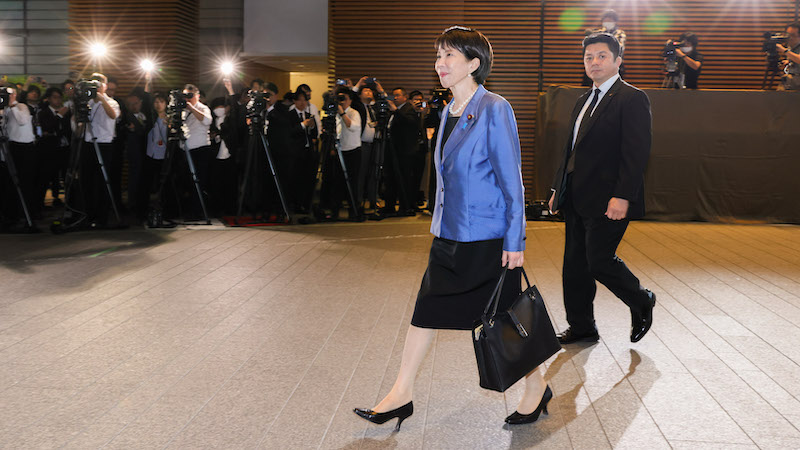By Shihoko Goto
(FPRI) — Having won the ruling Liberal Democratic Party’s (LDP) leadership election on October 4, Sanae Takaichi’s road to becoming Japan’s fifth prime minister in as many years has been anything but straightforward. Until now, the leader of the LDP had almost always emerged as Japan’s premier.
But with the once all-powerful party’s popularity taking a nosedive over the past year, there is intense pressure for the new leader to restore stability to a fractured political landscape, revitalize a sluggish economy, and promote herself as a leading voice in the Indo-Pacific all at the same time or else risk being yet another short-lived Japanese leader.
Takaichi’s first immediate hurdle will be to make headway on Japan’s foreign policy directive. Less than a week after taking on the premiership, she will be joining Southeast Asian leaders as the ASEAN summit meeting in Kuala Lumpur, which will then be followed by hosting President Trump in Tokyo, and then attending the APEC summit meeting in South Korea. While furthering Japan’s relations in Southeast Asia is critical, the highest stakes will be her meeting with Trump and the prospect of building a rapport with the president.
All eyes will be on her ability to move forward with the US-Japan trade agreement, which was signed in September, but play hardball should the terms conflict with Japan’s own national interests, especially on expectations for Japan to provide $550 billion in foreign direct investment to critical US industries. At the same time, as a self-proclaimed visionary successor to the late prime minister Shinzo Abe, Takaichi will be expected to emerge as a global statesman who has the ear of the US president.
Japan remains the most steadfast US ally in the Indo-Pacific, which continues to be the most dynamic and populous region in the world. China, however, is now firmly established as the regional economic as well as military hegemon. As Washington’s China strategy remains unclear, Japan can play a pivotal role in shaping the Trump administration’s perspective and its longer-term relations with Beijing. But that will require the Japanese leader to have the ear, and ultimately the trust, of the US president.
Yet it is on the economic front that the Japanese voters will expect positive change from the new administration and where the greatest immediate political risks lie. Rising living costs, inflationary pressure, slow wage growth, and continued lackluster growth has led to greater disillusionment about the status quo represented by the LDP on the one hand, and the strengthening of opposition parties on the other.
Given that it does not have a majority in the Diet, the LDP has had to partner with another party in order to form a government. With its partner of nearly three decades, Komeito, no longer available to form a government, Takaichi is now gambling on a new partnership with the Ishin no Kai, or the Innovation Party, to pursue an agenda that includes boosting public spending and maintaining low interest rates. Yet with the Innovation Party being more fiscally conservative, the prospect of a divide within the coalition government already looms large.
The financial markets have responded positively to the news of Takaichi’s victory, first to lead the LDP and then her confirmation as prime minister, signaling investors’ confidence in the economic roadmap that she has outlined. Certainly, Washington’s first and foremost interest will be to have Japan’s growth prospects on solid footing. A strong Japanese economy remains the foundation for what the United States will need most from Tokyo moving forward, namely a politically stable ally in the Indo-Pacific and the ability for Japan to deliver on its commitments to continue boosting its spending as well as to increase investments to the United States. For that vision to take flight, though, Takaichi will first and foremost have to establish herself as a leader who will remain in power for the foreseeable future, rather than yet another prime minister who is in office for about a year.
About the author: Shihoko Goto is the Vice President of Programs and Director of the Asia Program at the Foreign Policy Research Institute (FPRI).
Source: This article was published at FPRI


AloJapan.com